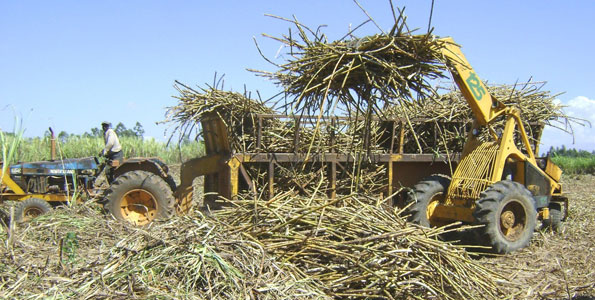More than 76,000 farmers have abandoned sugarcane farming in Mumias driven by failure of Mumias Sugar factory to pay the farmers Sh600m accrued over the last two years.
According to the Kenya National Federation of Sugarcane Farmers, cane planters in the region have uprooted the crop and only 20,000 farmers are still engaged in cane farming.
The farmers have moved to plant other crops such as maize, groundnuts and soya beans.
Related
Why sugarcane production is on the decline in Kenya
Bio fertilizer doubles cane yields
Enterprising youth earns from sugarcane juice
Mumias Sugar Factory is the largest cane miller in Kenya and at its peak it was producing about 250,000 tonnes of sugar representing 42 per cent of the total national output estimated at 600,000 tonnes.
However, currently, the miller has been shut down due to lack of raw materials necessary for it to operate.
Even though the factory has its own sugar plantation it can only produce seven per cent of the total raw material requirement with the cane taking up to two years to mature.

This comes at a time when the area under cane reduced to 191.2 thousand hectares last year compared to 220.8 thousand hectares in 2016 according to the 2018 economic survey report by the Kenya National Bureau of Statistics.
Reduction in cane area was attributable to conversion of some area under cane to other crops. Further, the quantity of cane delivered to factories reduced by 33.3 per cent from 7.2m tonnes in 2016 to 4.8m tonnes in 2017.
This was on account of prolonged dry weather conditions which were unfavorable for the growth of cane leading to harvesting of immature cane. As a result, the average sugarcane yield reduced to 55.3 tonnes per hectare in 2017 compared to 62.2 tonnes per hectare in 2016, representing a decrease of 10.9 per cent.
In this, the total domestic sugar production declined by 41.2 per cent from 639.7 thousand tonnes in 2016 to 376.1 thousand tonnes in 2017.
A total of 989.6 thousand tonnes of sugar was imported in 2017 to bridge the deficit occasioned by the low production during the year. Most of the sugar imports were meant for final consumption at 83.1 per cent of total sugar imports.
















Comments powered by CComment